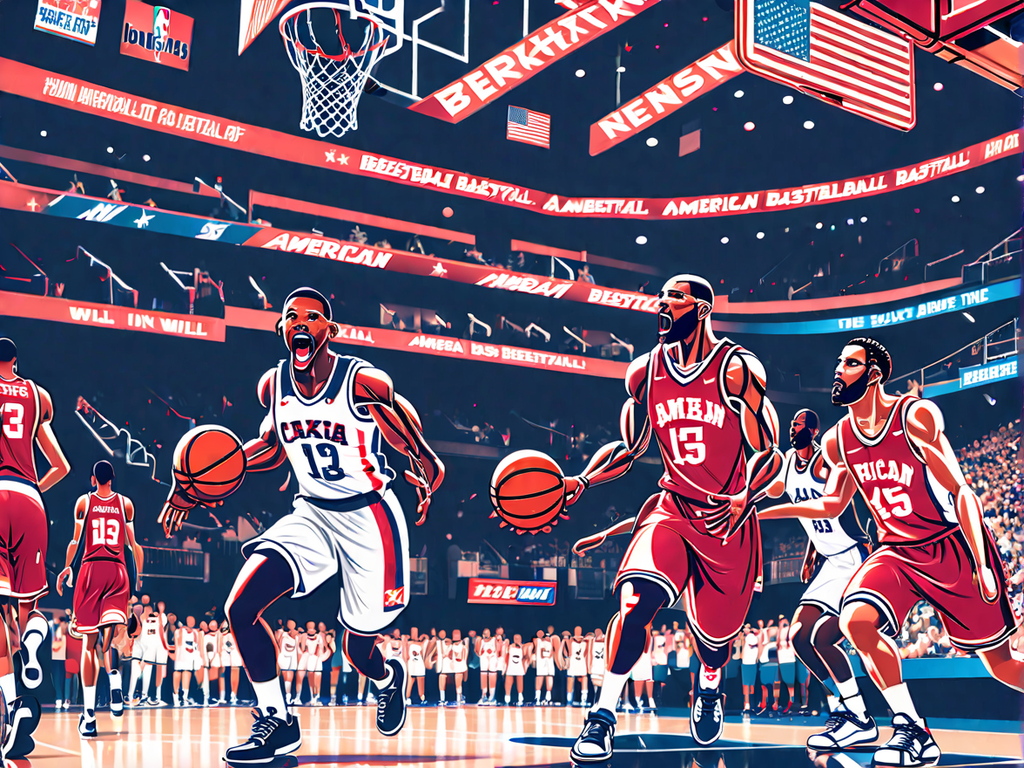Gene editing has emerged as a powerful tool in the quest to decipher and modify genetic material, and CRISPR (Clustered Regularly Interspaced Short Palindromic Repeats) stands at the forefront of this scientific revolution. Through precise manipulation of DNA, CRISPR gene editing has the potential to revolutionize healthcare by enabling targeted therapies and potentially eradicating genetic disorders.
Join us as we unravel the fundamentals of CRISPR gene editing, explore its applications in healthcare, and navigate the ethical considerations surrounding this groundbreaking technology. We’ll also examine the challenges faced in gene editing, discuss the future of this field, and examine the public perception of CRISPR gene editing.
So, buckle up as we embark on this exciting journey into the world of CRISPR gene editing and discover how it is transforming the boundaries of precision biology. Let’s dive in and explore the incredible potential that lies within our DNA.

Understanding CRISPR: The Breakthrough in Gene Editing
The field of gene editing has witnessed a monumental breakthrough with the development of CRISPR technology. CRISPR, which stands for Clustered Regularly Interspaced Short Palindromic Repeats, has revolutionized the way we approach genetic modifications.
“CRISPR technology is like a pair of molecular scissors that allows scientists to precisely edit genetic material.”
With CRISPR, scientists can selectively alter specific sequences of DNA, enabling them to add, remove, or modify genes with unparalleled precision.
The key components involved in CRISPR gene editing are:
- Guide RNA (gRNA): This RNA molecule guides the CRISPR system to the specific location on the DNA where the edit needs to be made.
- CRISPR-associated (Cas) protein: The Cas protein acts as the molecular scissors that cut the DNA at the targeted site.
- Donor DNA: In some cases, a donor DNA is added to the CRISPR system to facilitate the repair process and introduce the desired genetic changes.
By utilizing these components, CRISPR technology offers a breakthrough in gene editing with unprecedented accuracy. It allows scientists to explore the intricacies of genetics, unlocking new possibilities for disease treatment and prevention.
| Advancements in CRISPR Gene Editing | Potential Applications |
|---|---|
| Enhanced precision | Treating genetic disorders |
| Efficient and cost-effective | Developing targeted therapies |
| Wide range of applications | Potentially eradicating diseases |
As demonstrated in the table above, the breakthrough in CRISPR gene editing opens up endless possibilities in the field of medicine. With its enhanced precision, efficiency, and wide range of applications, CRISPR has the potential to revolutionize healthcare and deliver personalized treatment approaches.
Applications of CRISPR Gene Editing in Healthcare
The revolutionary CRISPR gene editing technology holds immense promise for transforming healthcare, offering new avenues for treating genetic disorders, developing more effective therapies, and potentially eradicating certain diseases altogether.

Treating Genetic Disorders
CRISPR gene editing applications have the potential to revolutionize the treatment of genetic disorders. By precisely targeting and modifying specific genes, researchers can correct the underlying genetic mutations responsible for these disorders. This opens up possibilities for developing personalized, gene-based therapies that can provide long-lasting and potentially curative treatments for individuals affected by genetic diseases.
Developing More Effective Therapies
Beyond genetic disorders, CRISPR gene editing has the potential to improve the efficacy of existing therapies and make them more targeted and precise. For example, by modifying immune cells using CRISPR, researchers have been able to enhance the effectiveness of immunotherapies for cancer treatment. This not only improves patient outcomes but also minimizes side effects by precisely targeting cancer cells while sparing healthy ones.
Potential Disease Eradication
In addition to treating individual patients, CRISPR gene editing has the potential to eradicate certain diseases altogether. By targeting disease-causing genes, scientists can disrupt the transmission and progression of genetic diseases. This approach holds promise for diseases with a known genetic component, like sickle cell anemia or cystic fibrosis, where modifying the genes responsible can potentially eliminate the risk of the disease being inherited or manifesting in future generations.
“CRISPR gene editing technology offers tremendous opportunities for improving healthcare outcomes. From treating genetic disorders to developing innovative therapies and potentially eradicating diseases, its applications in healthcare are vast and game-changing.”
The applications of CRISPR gene editing in healthcare are vast and continue to expand. By leveraging this powerful tool, researchers and medical professionals aim to bring about groundbreaking advancements that could dramatically improve patient outcomes and revolutionize the way we approach healthcare.
Ethical Considerations Surrounding Gene Editing
Gene editing, especially through technologies like CRISPR, has revolutionized the field of biology by providing unprecedented control over genetic material. However, this power comes with ethical implications that must be carefully considered. Altering the DNA of living organisms raises concerns regarding the potential consequences and the ethical boundaries we should adhere to.
Ethical considerations surrounding gene editing primarily revolve around three main areas: human applications, ecological impact, and consent. When it comes to human applications, the alteration of human DNA raises questions about the potential for unintended consequences and long-term effects. Gene editing technologies like CRISPR have the ability to correct genetic defects and potentially eradicate certain diseases, but they also open the door to the possibility of misuse, such as creating “designer babies” or enhancing certain traits beyond what is considered ethical.
The ecological impact of gene editing is another crucial aspect to consider. Modifying the genetic makeup of organisms, especially those in the wild, may have unforeseen consequences on ecosystems. Gene-edited organisms could potentially outcompete or disrupt native species, leading to unintended ecological imbalances and damaging delicate ecosystems.
Consent is a key ethical concern when it comes to gene editing, particularly in regards to human applications. The potential alteration of one’s genetic code raises questions about informed consent, especially when it comes to germline editing, which affects future generations. The ethical implications and consequences of these decisions must be thoroughly considered and weighed against the potential benefits.
“With great power comes great responsibility.” – Uncle BenConsidering the immense potential of gene editing technologies, it is crucial to establish ethical frameworks and guidelines to ensure responsible and regulated use. The scientific community, regulatory bodies, and society as a whole must engage in ongoing discussions to address ethical dilemmas and establish boundaries for gene editing practices.
Examples of Ethical Guidelines and Frameworks in Gene Editing:
Guidelines Description National Academies of Sciences, Engineering, and Medicine (NASEM) Provides recommendations on the responsible use of gene editing technologies in various contexts, including human germline editing. International Commission on the Clinical Use of Human Germline Genome Editing An international panel that aims to define a framework for the clinical and research use of human germline genome editing. World Health Organization (WHO) Working towards establishing global governance frameworks for human genome editing, including ethical considerations and international collaboration. These guidelines and frameworks serve as important tools to navigate the ethical considerations surrounding gene editing. They emphasize the need for transparency, responsible conduct, and a comprehensive understanding of the implications and limitations of gene editing technologies.
In conclusion, while gene editing technologies like CRISPR have immense potential for advancing precision biology and healthcare, ethical considerations must be at the forefront of decision-making. Through open dialogue and the establishment of clear ethical guidelines, we can harness the power of gene editing responsibly and ensure its benefits are realized without compromising our ethical principles.
Challenges in CRISPR Gene Editing and Future Directions
The field of CRISPR gene editing presents exciting possibilities for revolutionizing healthcare and disease treatment. However, it also comes with its own set of challenges. Overcoming these hurdles is crucial to the future of gene editing and harnessing its full potential.
1. Off-Target Effects
One of the major challenges in CRISPR gene editing is the risk of off-target effects. While CRISPR technology aims to precisely modify genetic material, there is a possibility that unintended changes may occur in areas of the genome that were not intended for modification. This can have unforeseen consequences and potentially lead to harmful side effects.
2. Delivery Methods
Another challenge lies in delivering the CRISPR system to the desired cells or tissues within the body. Efficient delivery methods are crucial for successful gene editing. Researchers are exploring various approaches, including viral vectors, lipid nanoparticles, and non-viral methods, to optimize the delivery process and ensure the precise targeting of genetic material.
3. Ethical Considerations
The ethical considerations surrounding gene editing, including CRISPR, cannot be ignored. The ability to modify human DNA raises profound ethical questions, such as the potential for designer babies and the long-term effects of altering the germline. Balancing the benefits of gene editing with the ethical implications is an ongoing conversation within the scientific community and society as a whole.
Future Directions
Despite these challenges, the future of gene editing holds immense promise. Researchers are continually working to improve the precision and efficiency of CRISPR gene editing techniques, addressing off-target effects and enhancing delivery methods. Additionally, advancements in gene editing tools, such as base editing and prime editing, offer new avenues for precise DNA modifications.
As gene editing technologies evolve, it is essential to foster ongoing interdisciplinary collaborations and promote responsible research practices. These efforts will contribute to unlocking the full potential of CRISPR gene editing in healthcare, agriculture, and various other fields. The future of gene editing holds tremendous possibilities for advancements in personalized medicine, disease prevention, and sustainable solutions.
CRISPR Gene Editing and Precision Medicine
Advancements in gene editing technologies, particularly CRISPR, have opened up new possibilities in the field of precision medicine. Precision medicine aims to tailor healthcare treatments to an individual’s unique genetic makeup, improving the effectiveness and outcomes of therapies. With its unparalleled precision and accuracy, CRISPR gene editing holds tremendous potential in revolutionizing personalized treatment approaches.
One of the key benefits of CRISPR gene editing in precision medicine is its ability to target specific genes and make precise modifications. By directly editing faulty genes that contribute to the development of diseases, CRISPR offers the potential to treat genetic disorders more effectively. This targeted approach minimizes off-target effects and increases the chances of successful treatment.
Furthermore, CRISPR gene editing can enable the development of innovative therapies for complex diseases. Scientists are exploring the use of CRISPR to modify immune cells, such as T-cells, to enhance their effectiveness in fighting cancer. This breakthrough approach, known as CAR-T cell therapy, shows promising results in treating certain types of leukemia and lymphoma.
“CRISPR gene editing has the potential to revolutionize how we approach precision medicine. By precisely modifying genetic material, we can develop more targeted and personalized treatments for patients, providing better outcomes and improved quality of life.” – Dr. Emma Johnson, Precision Biology Researcher
Furthermore, CRISPR gene editing can play a crucial role in drug discovery and development. By selectively turning on or off specific genes associated with drug metabolism, researchers can better understand how drugs interact within an individual’s body. This knowledge can lead to the development of personalized treatment regimens, minimizing side effects and increasing drug efficacy.
However, it is important to address the ethical considerations surrounding CRISPR gene editing in precision medicine. As this technology becomes more accessible, there is a need for responsible use and regulation to ensure patient safety and prevent unintended consequences. Open discussions and strict guidelines are essential to maintain public trust and confidence in the field of gene editing.
Potential Applications of CRISPR Gene Editing in Precision Medicine Benefits Treatment of genetic disorders Improved precision in targeting faulty genes
Reduced off-target effects
Increased treatment success ratesDevelopment of innovative cancer therapies Enhanced efficacy of immune cells
Targeted destruction of cancer cells
Improved survival rates in certain types of cancerDrug discovery and development Personalized treatment regimens
Minimized side effects
Increased drug efficacyAs the field of precision medicine continues to evolve, the integration of CRISPR gene editing holds immense promise for transforming healthcare. By combining the power of gene editing with personalized treatment approaches, we have the potential to provide better care and outcomes for patients, paving the way for a healthier and more precise future.
The Public Perception of CRISPR Gene Editing
The public perception of CRISPR gene editing technology is a complex balance of hope, skepticism, and ethical concerns. While some view it as a groundbreaking scientific advancement with the potential to revolutionize healthcare and eradicate genetic diseases, others approach it with caution and apprehension.
Positive attitudes towards gene editing perceive it as a promising tool that can offer personalized treatments and enhance human well-being. They recognize the immense potential of CRISPR technology in curing genetic disorders and even preventing certain diseases from passing down through generations. This perception stems from the belief that precision gene editing could lead to targeted therapies, reduced healthcare costs, and improved quality of life.
On the other hand, negative attitudes towards gene editing are rooted in concerns about the ethical implications and unforeseen consequences of modifying the human genome. There are worries surrounding the potential misuse or unintended side effects of this powerful technology. Critics emphasize the need for strict regulations and ethical guidelines to prevent genetic manipulation from crossing ethical boundaries and to safeguard the integrity and dignity of individuals.
Driving public acceptance and understanding of CRISPR gene editing relies heavily on education and transparent communication. It is important for scientists, policymakers, and healthcare professionals to communicate the potential benefits and risks associated with gene editing in a clear and accessible manner. Open and inclusive discussions on the ethical considerations and social implications can help shape the public perception, while ensuring that gene editing technologies are developed and used responsibly for the betterment of society.

































